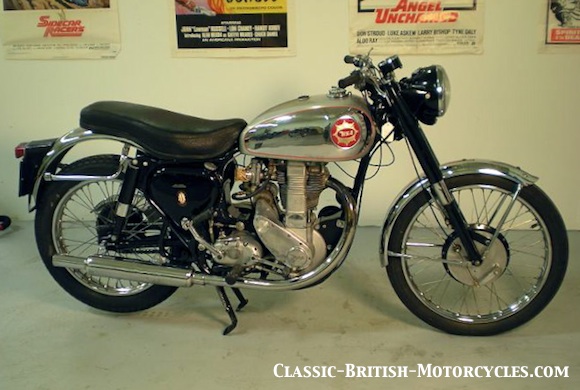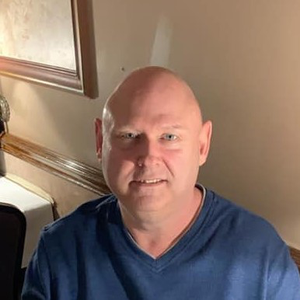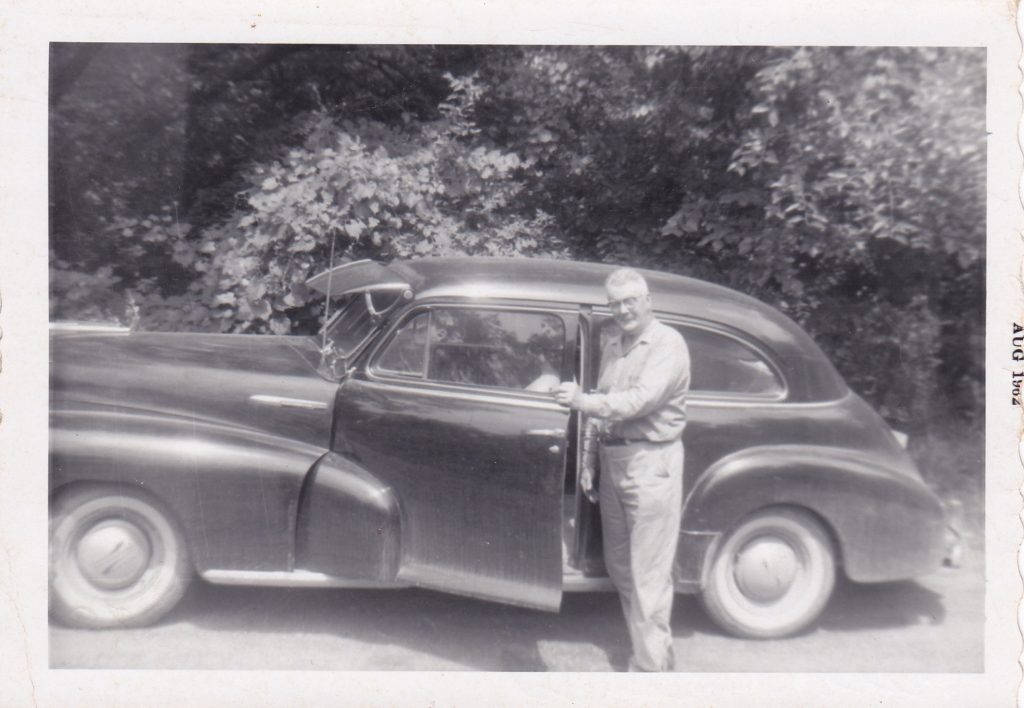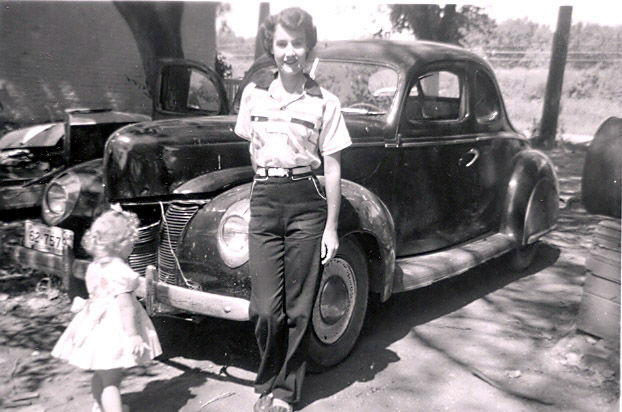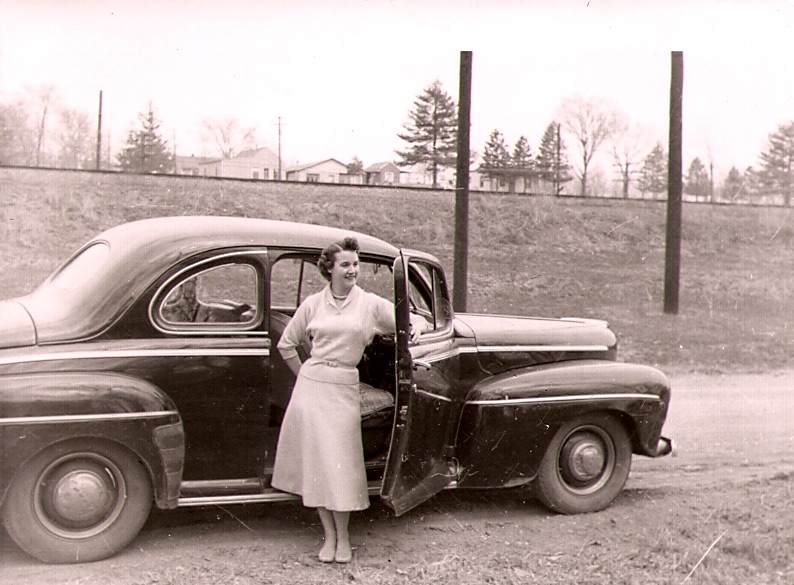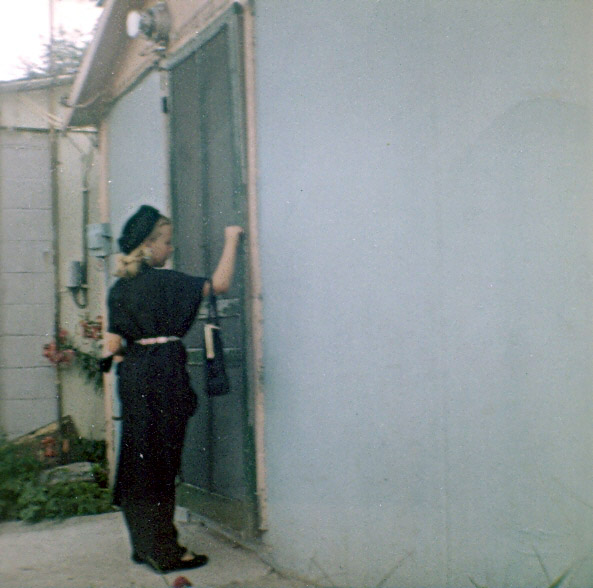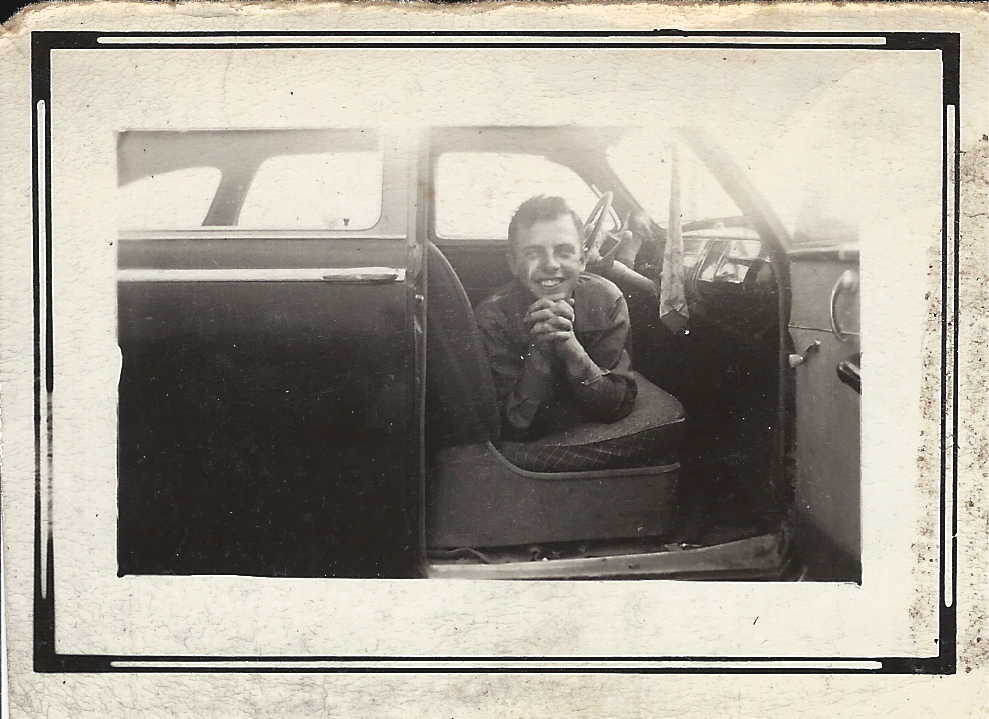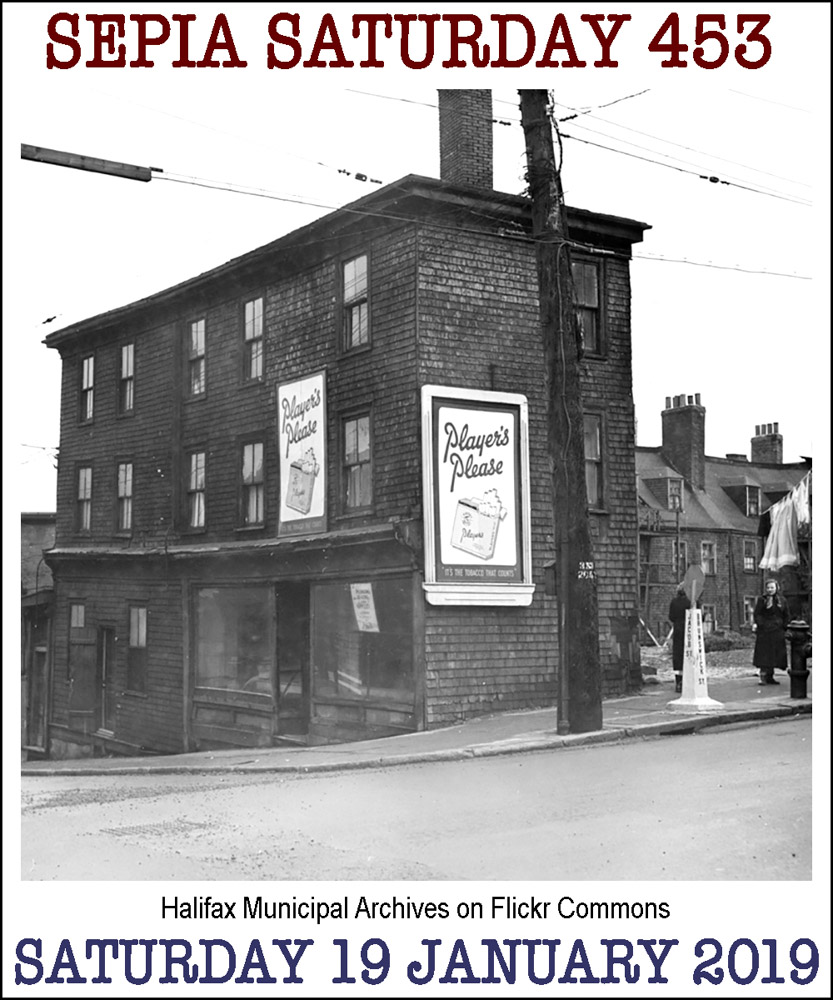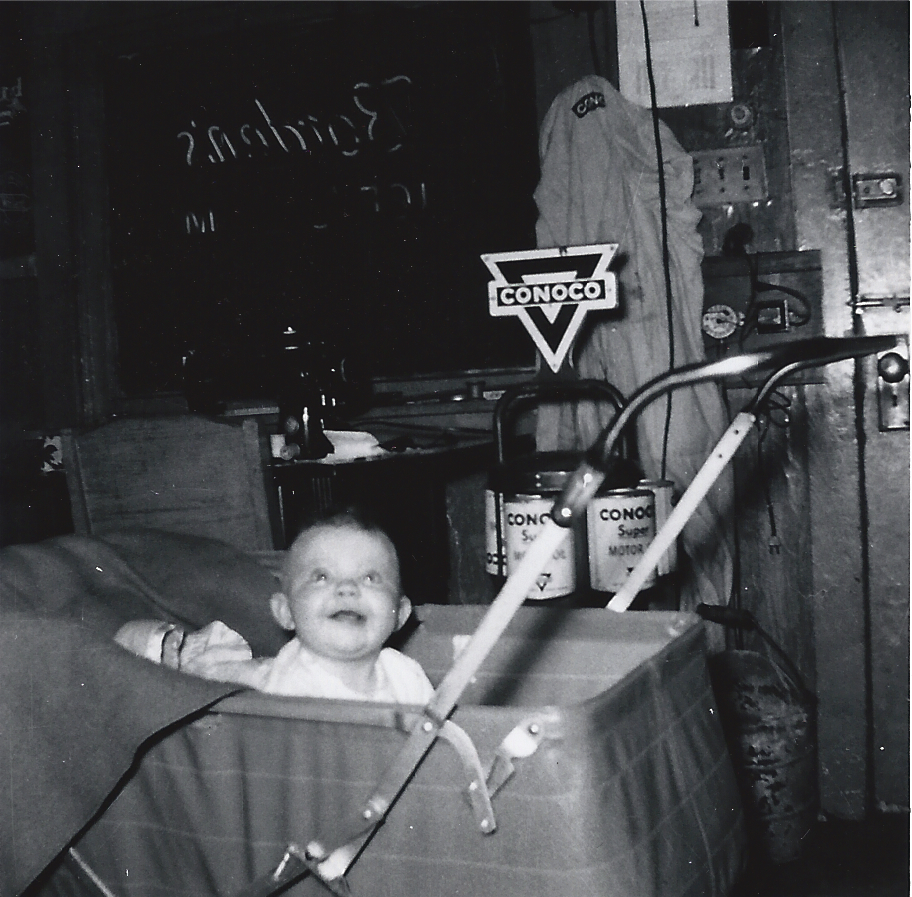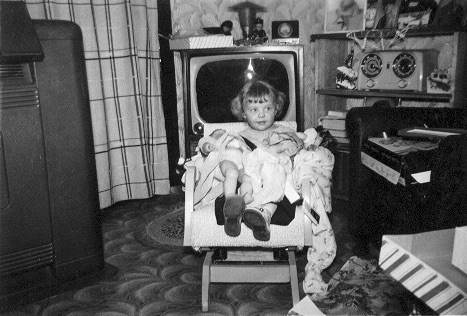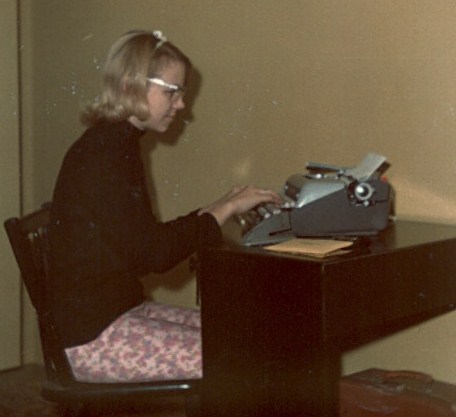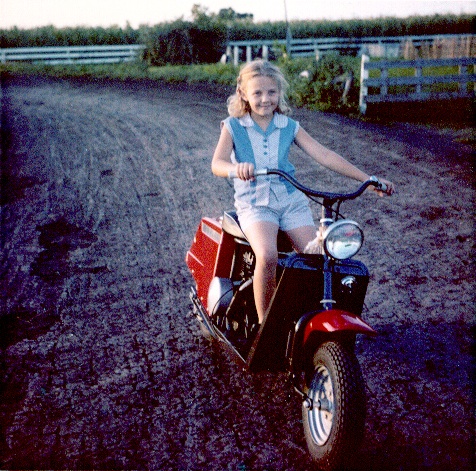Sepia Saturday provides bloggers with an opportunity to share their history through the medium of photographs. Historical photographs of any age or kind become the launchpad for explorations of family history, local history and social history in fact or fiction, poetry or prose, words or further images. If you want to play along, sign up to the link, try to visit as many of the other participants as possible, and have fun.
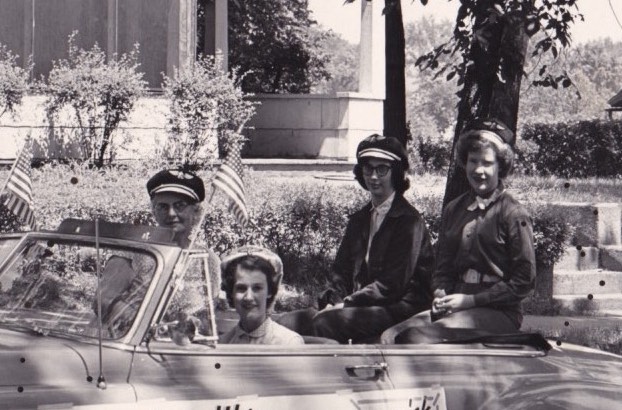
Four women sit in a convertible that is outfitted with two small American flags.
The women wear hats.
The head and hat of the woman in the passenger seat is visible above the windshield.
The woman in back on the right has light-colored hair parted on the right.
The woman in the driver’s seat wears a hat set back on her head.
Her dark hair is styled a bit back from her face and is parted on the left.
She sports a light-colored and tailored outfit.
She faces the camera.
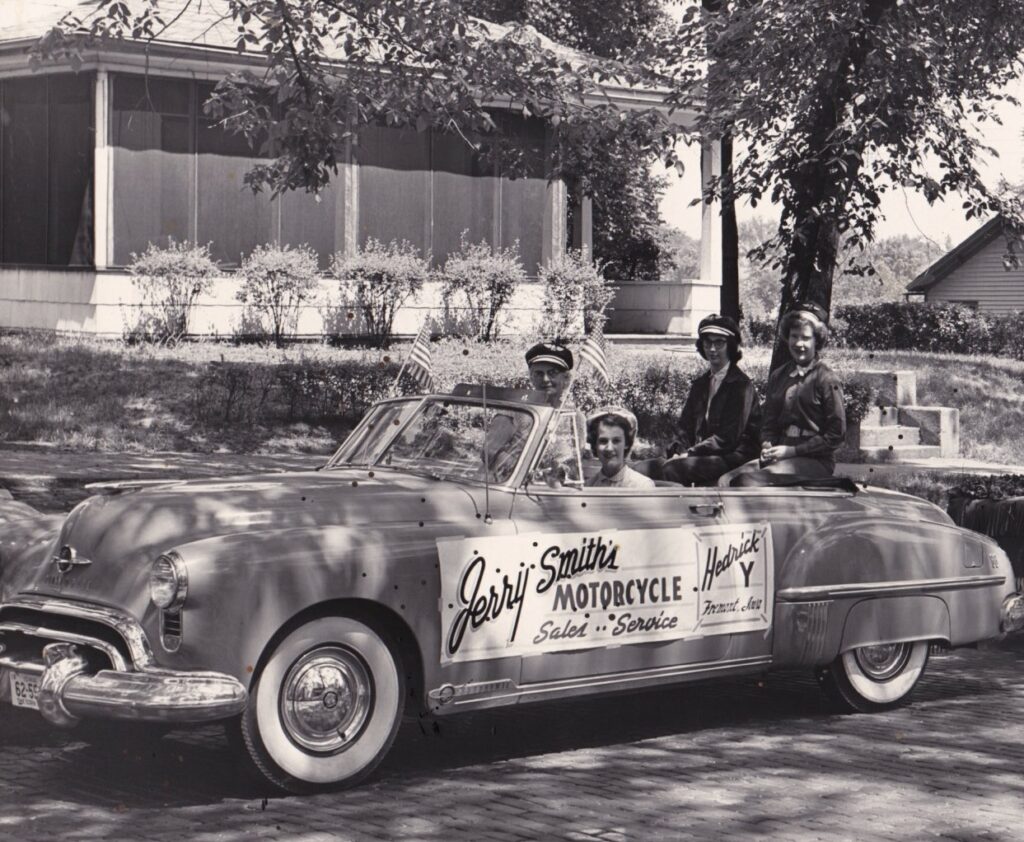
The light-colored car is stopped on a residential street.
The car displays a sign:
Jerry Smith’s
Motorcycle
Sales … Service
Hedrick Y
Fremont, Iowa
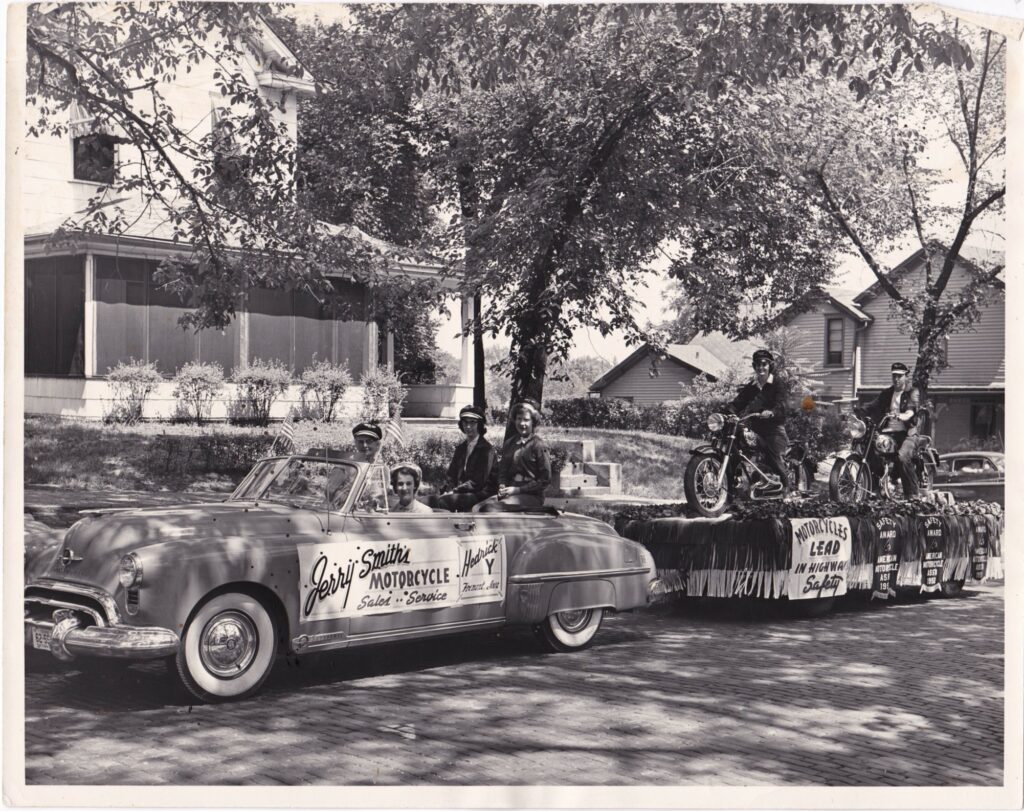
A flatbed trailer is hitched to the car and bears a sign:
Motorcycles Lead In Highway Safety.
Three banners complete the display on the side of the trailer:
Safety Award
American Motorcycle Assn.
The middle banner is dated 1952. Dates on the other banners are not readable.
A woman and a man sit astride motorcycles atop the trailer.
They wear matching hats.
Queen Elizabeth II and her Lady-in-Waiting arrived at a reception in Brisbane in 1954.


That’s my mother sitting in the driver’s seat looking a bit like the Queen, don’t you think? Mom’s mother-in-law, Abbie Webber Smith is in the passenger seat. And the two “ladies-in-waiting” are a good friend of my mother on the left, and Mom’s sister Wilma on the right. I don’t know the identities of the people on the motorcycles.
Jerry Smith was my dad. He sold and repaired motorcycles and was also a professional racer. The car, signs, and trailer appear to be an entry in a parade. I would guess the parade was in Ottumwa, Iowa – lots of brick streets there; it is my mom’s hometown; and is only 20 miles or so from the location of dad’s business. He would certainly want to advertise his business to onlookers at a parade in the nearest city. But he chose to do more than just show off a couple of bikes and the name of his business. He hoped to encourage sales by promoting motorcycles as female-friendly and safe – not the stereotypical image of outlaw bikers portrayed by Marlon Brando and others in the movies.
I would date the photo 1953-1955. I was born in the fall of 1953 (we can’t see Mom’s belly in this photo) and my parents separated/divorced when I was about two.
I hung around Dad’s business during my visits and the wings on the hats made me think they might be an emblem from BSA motorcycles, although they are not the only motorcycle maker that uses wings as part of their branding. I found a matching hat for sale on eBay. Unfortunately, the seller’s description is not definitive as to date or brand – BSA or BMW?

Dad sold both BSA and BMW motorcycles and I just have a hunch this is BSA – a British bike – fitting to honor the Queen this weekend. BMW, a German bike, tends to have checkerboard patterns as part of their branding. But – just my guess.
I think the motorcycles are probably BSAs as well. This 1953 BSA Gold Star looks similar to the bike on the right. But the pipes of the one on the left? My google search turned up zilch. I’ll guess it is also a BSA. Maybe one of you knows vintage motorcycles and can chime in.

This is my contribution to Sepia Saturday on this Jubilee Weekend. See what other bloggers have created here.
I have been absent from Sepia Saturday for a few weeks. I committed myself to a series that I don’t seem to have my heart in at the moment – plus I have been going about it all wrong. And there have been the ups and downs of life. It was a nice break to just respond to the prompt photo without trying to make it fit my self-imposed restrictions.
One of the (several) sad things that happened recently is the unexpected death of a genealogy cousin I never got to meet. He died a week ago and the anniversary of his birth is today. Brian Schneden’s grandmother Blanche Coates and my grandmother Eveline Coates were sisters. Years ago I found a letter Brian wrote to my grandmother apologizing for his delay in returning some family history papers to her. I think he was a teenager at the time. His name was unfamiliar to me. At least we had the internet by then and I was able to find an email address for him. He generously shared photos and information with me over the years and we got as far as becoming Facebook friends. We wondered when we would have the opportunity to meet and thought about how great it would be to take a trip to our common ancestral home in Durham, England. In fact, last Sunday, I found what looks like it could be our great-grandfather on a ship passenger list arriving in the U.S. in 1884. I thought I would message Brian to get his thoughts. Less than an hour later, I saw a report of his death on Facebook. Scraps of paper and seemingly unimportant letters can be gold to those of us who have the genealogy bug; the generosity of those who share family photos and information is a treasure; and, as we all know but don’t like to admit, life can be unknowably short, so don’t delay.
His side job – apgen.org:
Brian H Schneden has over 30 years of experience in genealogical and family history research.
He works extensively with families of Germanic and UK origin and specializes in Schleswig-Holstein. Of particular interest to him is the region of the former republic of Dithmarschen.
In addition to traditional genealogical research, he also assists clients with needs in the areas of DNA, the construction of family health histories, and forensic genealogy.
He was a Charter and Founding Member of the “American Schleswig-Holstein Heritage Society” (ASHHS), Davenport, IA, and Genealogical Co-editor of the “Scott County, IA Heritage Book” project.
His current projects include the “DNA connection”, families of “Die Republik Dithmarschen, der Bauernrepublik,” and continued research within his own genealogy and family history.
As a member of the Association of Professional Genealogists (APG), he abides by the Code of Ethics set forth by the organization in accordance with prevailing professional standards in genealogy, and the Code of Ethics adopted by the Board of Certification of Genealogists. He also holds membership in the National Genealogical Society.
I hope the ancestors are celebrating your birthday with you today, Brian, and revealing all of the family stories and secrets we have been searching for.

